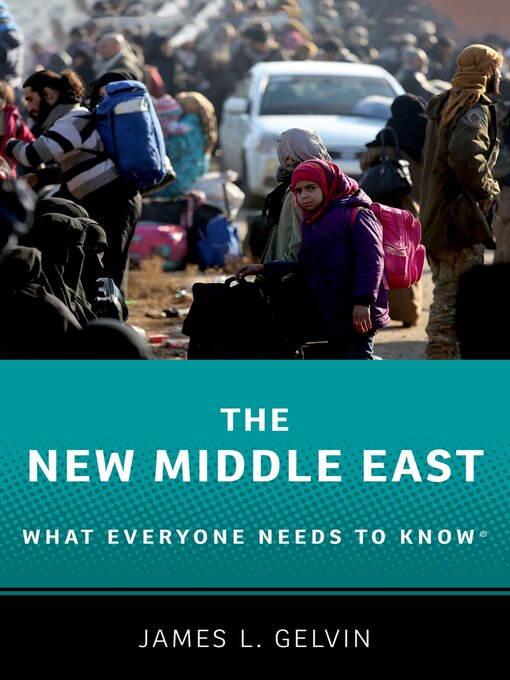-
Creators
-
Series
-
Publisher
-
Release date
October 3, 2017 -
Formats
-
Kindle Book
-
OverDrive Read
- ISBN: 9780190654016
-
EPUB ebook
- ISBN: 9780190654016
- File size: 1513 KB
-
-
Languages
- English
-
Reviews
-
Booklist
November 1, 2017
Russian and American influence has been felt in the Middle East since the Cold War, as Saudi Arabia and Iran vie for regional hegemony. The world depends on the Middle East for oil; hence, events there directly impact our lives. Unfortunately, Middle Eastern politics do not make sense to many outside the region.Gelvin, professor of modern Middle Eastern history at UCLA, seeks to explain events in the Middle East and outline near-future consequences. He does this by answering a series of questions. Most responses are only a couple of pages in length, enabling short bursts of reading without losing continuity. Each of the six chapters contains 8 to 14 questions. Chapter 1 outlines Middle Eastern history. Chapter 2 focuses on the Arab Spring uprisings. Chapter 3 focuses on Syria, chapter 4 on ISIS, and chapter 5 on key political players in the Middle East. The most interesting chapter is the last one, which focuses on sociopolitical conditions of the populations in the Middle East.Some of the other factors that directly impact and contribute to Middle Eastern politics are Pakistan and Afghanistan politics, stability in Yemen and Qatar, and, to a lesser degree, political stability in Sudan and Somalia. Unfortunately, these regions are not given as much attention as they deserve. Despite the oversight, this book serves as an excellent resource for understanding the Middle East from a political perspective and getting a sense of where it is headed.(Reprinted with permission of Booklist, copyright 2017, American Library Association.)
-
Loading
Why is availability limited?
×Availability can change throughout the month based on the library's budget. You can still place a hold on the title, and your hold will be automatically filled as soon as the title is available again.
The Kindle Book format for this title is not supported on:
×Read-along ebook
×The OverDrive Read format of this ebook has professional narration that plays while you read in your browser. Learn more here.

